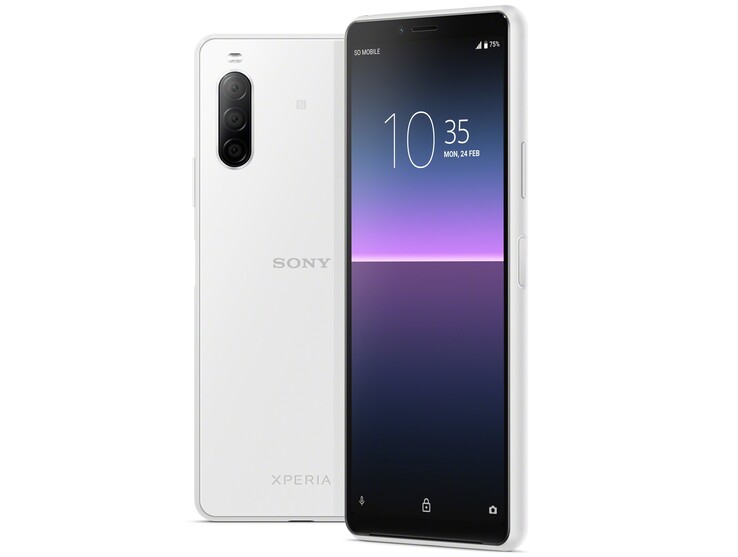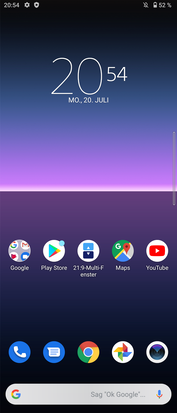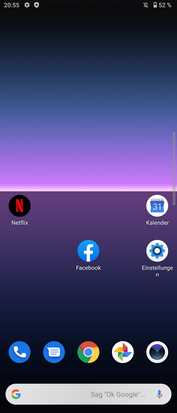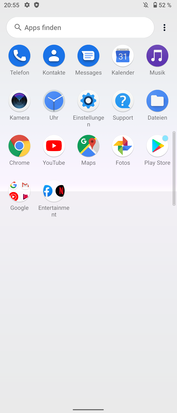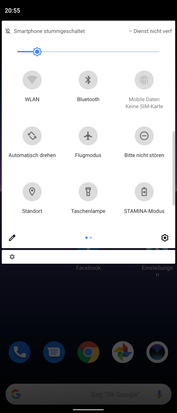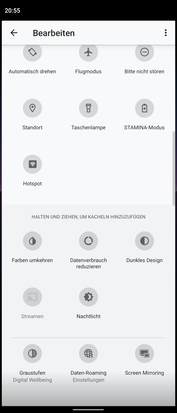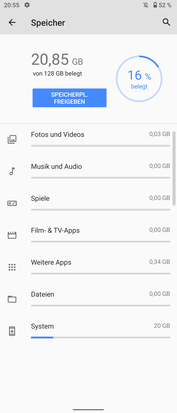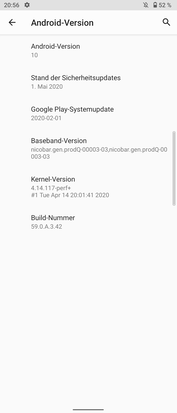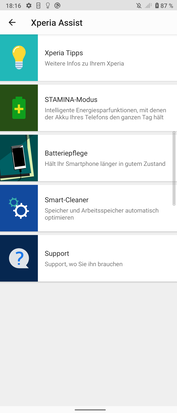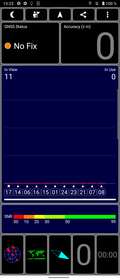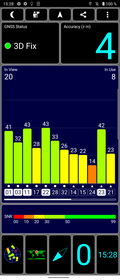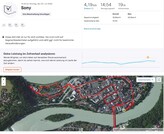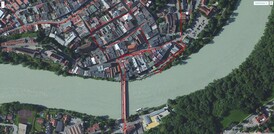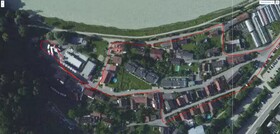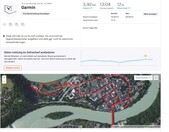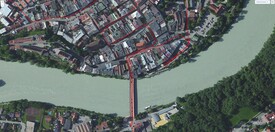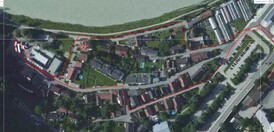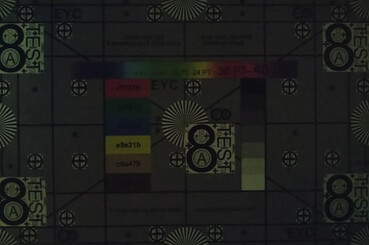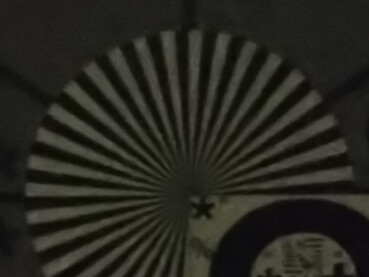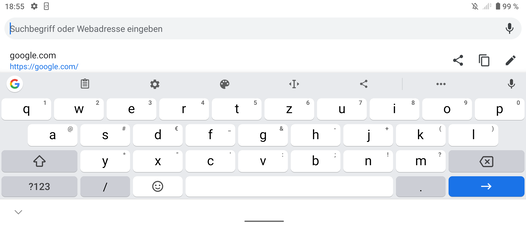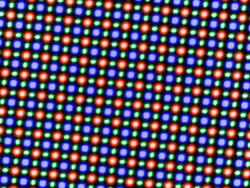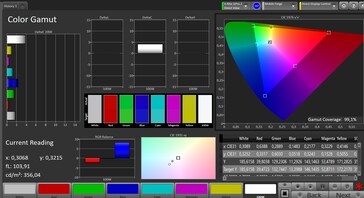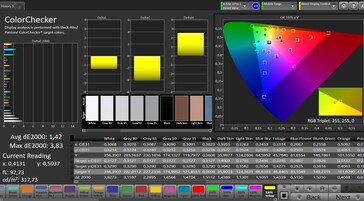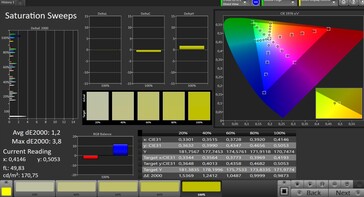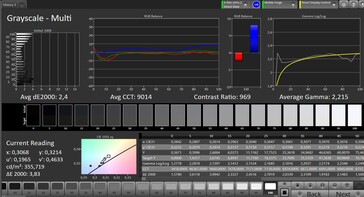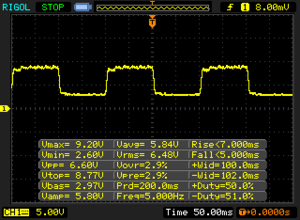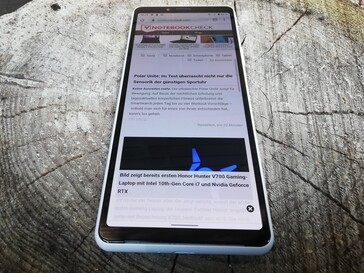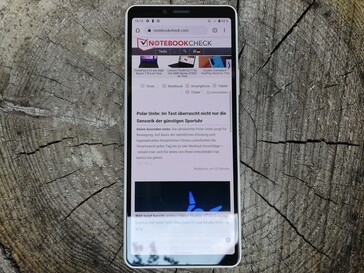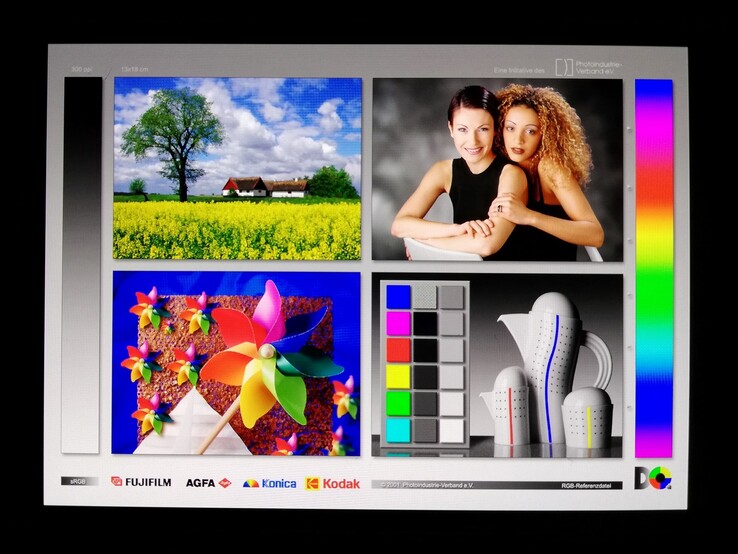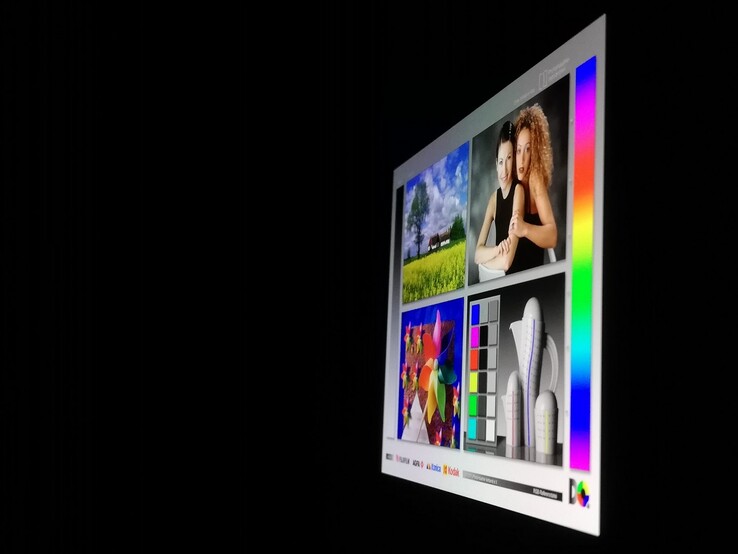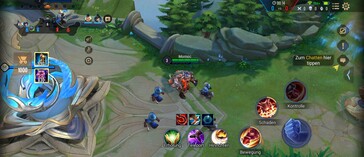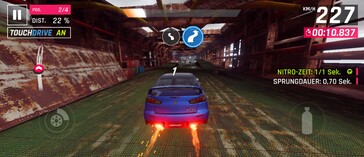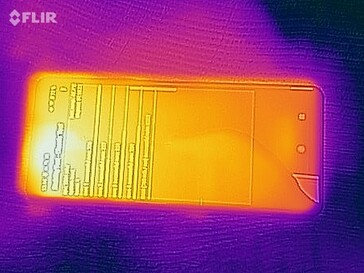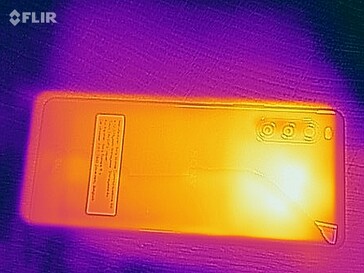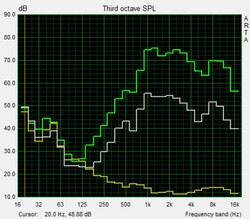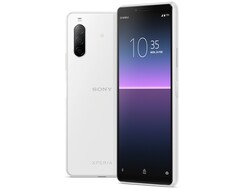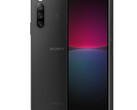Sony Xperia 10 II smartphone in review: The rest of the mid-range does it better
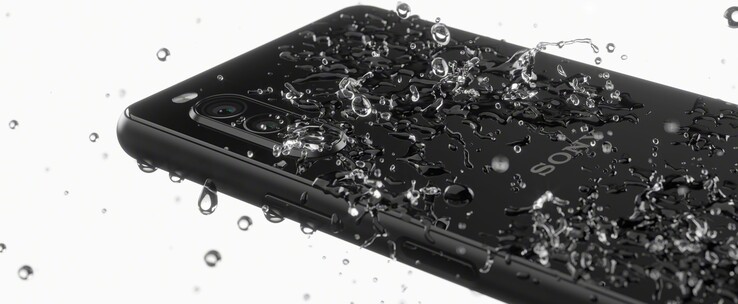
With the Xperia L4, we just had a very inexpensive representative of Sony's smartphones in the test, at just under 200 Euros (~$236). That there are also more-expensive devices is shown, for example, by the Xperia 5 and the Xperia 1 from last year, which were considerably costlier at MSRPs of 800 Euros (~$944) and 950 Euros (~$1,120). At that time, the Xperia 10 placed itself in the mid-price range at 350 Euros (~$413). This is now followed by the Xperia 10 II, which is a little more expensive at 400 Euros (~$472), though.
For this test, we compare the Sony smartphone with the competing devices listed below, to which further devices from our database can be added under each section.
Comparison devices
Rating | Date | Model | Weight | Drive | Size | Resolution | Price |
|---|---|---|---|---|---|---|---|
| 78.6 % v7 (old) | 08 / 2020 | Sony Xperia 10 II SD 665, Adreno 610 | 151 g | 128 GB eMMC Flash | 6.00" | 2520x1080 | |
| 83.9 % v6 (old) | 04 / 2019 | Sony Xperia 10 SD 630, Adreno 508 | 162 g | 64 GB eMMC Flash | 6.00" | 2520x1080 | |
| 80.2 % v7 (old) | 08 / 2020 | ZTE Axon 11 Helio P70, Mali-G72 MP3 | 165 g | 128 GB eMMC Flash | 6.47" | 2340x1080 | |
| 77.2 % v7 (old) | 08 / 2020 | Motorola Moto G Pro SD 665, Adreno 610 | 192 g | 128 GB eMMC Flash | 6.40" | 2300x1080 | |
| 78.8 % v7 (old) | 06 / 2020 | Samsung Galaxy A41 Helio P65, Mali-G52 MP2 | 152 g | 64 GB eMMC Flash | 6.10" | 2400x1080 |
Case - Waterproof Sony smartphone
The case of the Xperia 10 II looks very stable and is of high-quality workmanship. Plastic and glass are used as materials, which helps the Sony smartphone achieve a very low weight of 151 grams. Thanks to an IP65/68 certification, the phone is also dust and waterproof and, according to Sony, can also be used in the rain without any problems. Thanks to the 21:9 format of the display, the Xperia 10 II is significantly narrower than many other 6-inch smartphones. However, the stretched screen also ensures that the length of the 6-inch phone reaches that of a 6.5-inch smartphone.
The SIM/microSD slot can also be removed without any tools. However, since the tray is very prone to getting stuck when being inserted, this task will test your patience, especially when you have two small cards on top.
Connectivity - Notification LED and USB Type-C
In the Xperia 10 II, Sony has installed the Qualcomm Snapdragon 665 SoC, which is over a year old, the Qualcomm Adreno 610 integrated graphics unit, 4 GB of RAM, and 128 GB of internal storage. The latter can be expanded by up to 1 TB with a microSD card, but the dual-SIM function is lost in doing so.
Both nanoSIM slots support LTE, VoLTE, and VoWiFi, and the Xperia 10 II is also available in a single-SIM version. A notification LED is provided as well as a 3.5 mm audio jack and DRM Widevine L1. The USB Type-C port enables wired data transfers with the USB 2.0 standard.
Software - Almost no third-party apps
With the Xperia 10 II, users are looking at a relatively pure Android 10 OS with security patches at the level of May 1, 2020. Sony hardly makes any adjustments of its own, but it offers access to tips and intelligent maintenance functions with the Xperia Assistant in the settings menu. With Facebook and Netflix, there are only two apps made by third-party manufacturers, and they can't be uninstalled.
At the time of this test, an update to the security patch for July 1, 2020 was already available.
Communication and GPS - Android phone with NFC and LTE
The Xperia 10 II can establish mobile connections in GSM, 3G, and LTE networks. In the latter case, Cat. 11 downloads are possible at speeds of up to 600 Mb/s. Uploads are supported with Cat. 5 and up to 75 Mb/s.
Wireless connections via NFC, Bluetooth 5.0 and Wi-Fi 5 are possible in close ranges. With our Netgear Nighthawk AX12 reference router, the Sony smartphone achieves an average of 326 Mb/s for receiving data and 334 Mb/s for sending data. While the first result is on par with the other devices in our test field, the second result is enough for second place.
| Networking | |
| iperf3 transmit AX12 | |
| Samsung Galaxy A41 | |
| Sony Xperia 10 II | |
| Motorola Moto G Pro | |
| ZTE Axon 11 | |
| Sony Xperia 10 | |
| iperf3 receive AX12 | |
| Samsung Galaxy A41 | |
| Sony Xperia 10 | |
| ZTE Axon 11 | |
| Motorola Moto G Pro | |
| Sony Xperia 10 II | |
The Sony Xperia 10 II can determine its location using GLONASS and GPS. With the GPS Test app, we were able to achieve an accuracy of four meters outdoors. In closed rooms, however, no positioning was possible.
On our mandatory bike ride, the Sony smartphone showed a similar accuracy to our reference device, the Garmin Edge 520, whereby the Xperia 10 II tracks curves in a slightly more generous way most of the time. Therefore, the Android phone is well suited for simple navigation applications.
Telephone and call quality - Clear connection with the Xperia 10 II
The telephone app of the Sony Xperia 10 II offers direct access to stored favorites and allows the quick display of a numeric keypad. Two additional tabs provide access to recent calls and the contact list. Moreover, the phone also offers a good volume level during conversations; background noise is reliably filtered out, and participants can be easily understood at both ends.
Cameras - Shutter release has a strong delay
Sony equips the Xperia 10 II with a triple-camera setup on the back. The three lenses consist of a 12 MP main sensor with an f/2.0 aperture and two 8 MP sensors with f/2.4 and f/2.2 apertures for telephoto and wide-angle shots. An 8 MP camera with an f/2.0 aperture is available on the front for portrait photography. This camera certainly produces good photos outdoors, but even in rooms that are only lit by daylight, pictures turn out quite dark. This also reduces the amount of details that can be identified. An additional portrait mode allows the resulting image to be strongly adjusted with beautifying filters, for example.
The main camera also suffers from an image exposure that is too dark. Both close-ups and ambient shots still show strong colors, but the objects' edges look somewhat blurred in detail. The same applies for the wide-angle lens, although here, a glow effect around object transitions with strong color differences can be seen at the edges of our sample photo. In low-light conditions, our test subject is hardly recognizable, so that users have to resort to the special night mode for higher-quality night shots. In general, the camera app takes a long time to save a picture after pressing the shutter button. Snapshots with a fast sequence are, therefore, not possible without complications. Moreover, a manual mode allows users to adjust the focus, shutter speed, ISO value, brightness, and white balance.
The Xperia 10 II produces videos with a quality similar to that of our sample photos. Here too, users need to be prepared for a short delay before the recording starts after having pressed the shutter button. An image stabilizer reliably compensates for camera shake, and the camera can handle the adjustment well when switching between light and dark scenes. Users can select different shooting modes from the items listed in the screenshot.
Image comparison
Choose a scene and navigate within the first image. One click changes the position on touchscreens. One click on the zoomed-in image opens the original in a new window. The first image shows the scaled photograph of the test device.
Main camera (close-up)Main camera (surroundings)Wide angleLow lightUnder controlled lighting conditions, the Sony Xperia 10 II's camera illuminates the colors of the ColorChecker Passport darker than they should be. The test chart looks too dark as well; in addition, it shows a clear paleness at the left and right edges of the image.
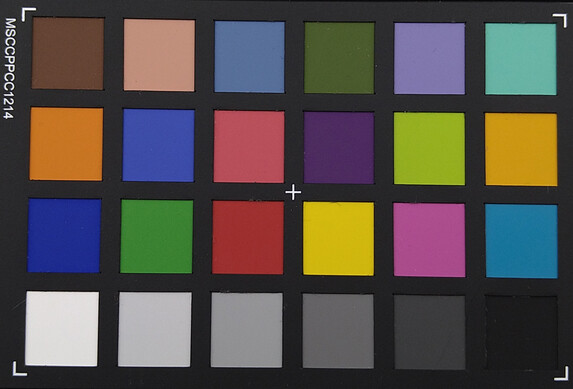
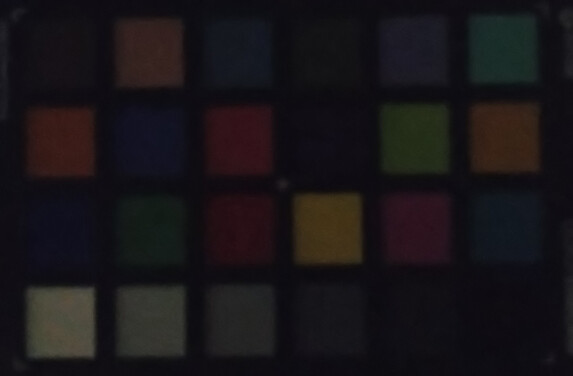
Accessories and warranty - Simple power adapter and headset in the box
In the box, the Xperia 10 II comes with a USB power adapter with a matching USB Type-C cable and a stereo headset with a 3.5 mm plug. Sony also offers other accessories such as corresponding protective cases.
Sony grants buyers of the Xperia 10 II a warranty period of 24 months.
Input devices and handling - Good touchscreen and fingerprint scanner
The Xperia 10 II's touchscreen has a very smooth surface, making it ideal for both drag-and-drop and swipe gestures. Furthermore, Google's GBoard keyboard is available for text input and can be customized in many ways. Input in portrait mode is easy, but in landscape mode, the keypad extends very widely across the screen due to the 21:9 format, which is why users have to activate the split mode manually here, for example.
To unlock the smartphone, a fingerprint scanner is available on the side of the phone. It reacts well to stored fingerprints as long as the corresponding finger is placed quite accurately on the sensor.
Display - OLED screen with low PWM frequency
The display of the Sony Xperia 10 II consists of a 6-inch OLED panel in the 21:9 format and offers a resolution of 2520x1080 pixels. When the ambient light sensor is deactivated, the maximum brightness is 354 cd/m²; on the other hand, the Android smartphone achieves a good 590 cd/m² on average with the sensor activated. In the APL50 test, a value of up to 680 cd/m² is achieved. This places the Xperia 10 II in the middle of our test field.
Our measurements show that Sony uses PWM for brightness control. In addition, the flickering is very low at a frequency of 116 Hz, which could cause problems for users with sensitive eyes.
| |||||||||||||||||||||||||
Brightness Distribution: 97 %
Center on Battery: 591 cd/m²
Contrast: ∞:1 (Black: 0 cd/m²)
ΔE ColorChecker Calman: 1.42 | ∀{0.5-29.43 Ø4.78}
ΔE Greyscale Calman: 2.4 | ∀{0.09-98 Ø5}
99.1% sRGB (Calman 2D)
Gamma: 2.215
CCT: 9014 K
| Sony Xperia 10 II OLED, 2520x1080, 6" | Sony Xperia 10 IPS-LCD, 2520x1080, 6" | ZTE Axon 11 AMOLED, 2340x1080, 6.5" | Motorola Moto G Pro IPS, 2300x1080, 6.4" | Samsung Galaxy A41 Super AMOLED, 2400x1080, 6.1" | |
|---|---|---|---|---|---|
| Screen | -88% | -66% | -96% | -21% | |
| Brightness middle (cd/m²) | 591 | 547 -7% | 610 3% | 735 24% | 554 -6% |
| Brightness (cd/m²) | 590 | 525 -11% | 614 4% | 732 24% | 559 -5% |
| Brightness Distribution (%) | 97 | 93 -4% | 98 1% | 97 0% | 92 -5% |
| Black Level * (cd/m²) | 0.36 | 0.5 | |||
| Colorchecker dE 2000 * | 1.42 | 4.6 -224% | 4.8 -238% | 5.84 -311% | 2 -41% |
| Colorchecker dE 2000 max. * | 3.83 | 12.1 -216% | 7.7 -101% | 10.2 -166% | 7.7 -101% |
| Greyscale dE 2000 * | 2.4 | 3.9 -63% | 3.9 -63% | 5.9 -146% | 1.6 33% |
| Gamma | 2.215 99% | 2.17 101% | 2.21 100% | 2.342 94% | 2.11 104% |
| CCT | 9014 72% | 7158 91% | 7122 91% | 7897 82% | 6589 99% |
| Contrast (:1) | 1519 | 1470 |
* ... smaller is better
Screen Flickering / PWM (Pulse-Width Modulation)
| Screen flickering / PWM detected | 116 Hz | ||
The display backlight flickers at 116 Hz (worst case, e.g., utilizing PWM) . The frequency of 116 Hz is very low, so the flickering may cause eyestrain and headaches after extended use. In comparison: 53 % of all tested devices do not use PWM to dim the display. If PWM was detected, an average of 8108 (minimum: 5 - maximum: 343500) Hz was measured. | |||
As is typical for OLED panels, the Xperia 10 II's display also delivers very strong colors and deep blacks. The CalMAN analysis also shows that the Sony smartphone displays colors with only a slightly increased blue component. Users can make detailed adjustments to the color reproduction in the settings menu.
Display Response Times
| ↔ Response Time Black to White | ||
|---|---|---|
| 8 ms ... rise ↗ and fall ↘ combined | ↗ 5 ms rise | |
| ↘ 3 ms fall | ||
| The screen shows fast response rates in our tests and should be suited for gaming. In comparison, all tested devices range from 0.1 (minimum) to 240 (maximum) ms. » 21 % of all devices are better. This means that the measured response time is better than the average of all tested devices (20.2 ms). | ||
| ↔ Response Time 50% Grey to 80% Grey | ||
| 12 ms ... rise ↗ and fall ↘ combined | ↗ 7 ms rise | |
| ↘ 5 ms fall | ||
| The screen shows good response rates in our tests, but may be too slow for competitive gamers. In comparison, all tested devices range from 0.165 (minimum) to 636 (maximum) ms. » 24 % of all devices are better. This means that the measured response time is better than the average of all tested devices (31.6 ms). | ||
Performance - Occasionally a bit slow
Sony has installed the 2019 mid-range Qualcomm Snapdragon 665 SoC in the Xperia 10 II. In combination with the 4 GB of RAM, it's sufficient for system operation. In everyday testing, however, the smartphone occasionally reacted somewhat sluggishly. This was particularly true when switching between several open programs and closing apps.
The benchmark results for the Sony smartphone are mixed. Depending on the individual discipline, it's either only slightly above the Sony Xperia 10 predecessor, in the middle of our test field or, as with the 3DMark "Sling Shot Extreme (ES3.1) Physics" test, in first place. This mixed score concerns both CPU and GPU performance.
| PCMark for Android | |
| Work performance score (sort by value) | |
| Sony Xperia 10 II | |
| Sony Xperia 10 | |
| ZTE Axon 11 | |
| Motorola Moto G Pro | |
| Samsung Galaxy A41 | |
| Average Qualcomm Snapdragon 665 (7437 - 9051, n=10) | |
| Work 2.0 performance score (sort by value) | |
| Sony Xperia 10 II | |
| Sony Xperia 10 | |
| ZTE Axon 11 | |
| Motorola Moto G Pro | |
| Samsung Galaxy A41 | |
| Average Qualcomm Snapdragon 665 (6189 - 11432, n=12) | |
| GFXBench 3.1 | |
| on screen Manhattan ES 3.1 Onscreen (sort by value) | |
| Sony Xperia 10 II | |
| Sony Xperia 10 | |
| ZTE Axon 11 | |
| Motorola Moto G Pro | |
| Samsung Galaxy A41 | |
| Average Qualcomm Snapdragon 665 (10 - 27, n=10) | |
| Average of class Smartphone (11 - 166, n=157, last 2 years) | |
| 1920x1080 Manhattan ES 3.1 Offscreen (sort by value) | |
| Sony Xperia 10 II | |
| Sony Xperia 10 | |
| ZTE Axon 11 | |
| Motorola Moto G Pro | |
| Samsung Galaxy A41 | |
| Average Qualcomm Snapdragon 665 (13 - 13, n=10) | |
| Average of class Smartphone (8.4 - 413, n=156, last 2 years) | |
| AnTuTu v8 - Total Score (sort by value) | |
| Sony Xperia 10 II | |
| ZTE Axon 11 | |
| Motorola Moto G Pro | |
| Samsung Galaxy A41 | |
| Average Qualcomm Snapdragon 665 (167305 - 181432, n=9) | |
This impression repeats itself in the browser benchmarks. While the Xperia 10 II can only be relegated to second place by the Samsung Galaxy A41 in the Octane V2 and Jetstream 1.1 tests, its performance is only enough for the penultimate place in the WebXPRT 3 test. In everyday life, websites scroll smoothly, and media content is loaded quickly.
| JetStream 1.1 - Total Score | |
| Samsung Galaxy A41 (Chrome 83.0.4103.101) | |
| Sony Xperia 10 II (Chrome 84) | |
| Motorola Moto G Pro (Chrome 83.0.4103.106) | |
| Average Qualcomm Snapdragon 665 (33.4 - 51, n=8) | |
| ZTE Axon 11 (Chrome 84) | |
| WebXPRT 3 - Overall | |
| Average of class Smartphone (38 - 380, n=31, last 2 years) | |
| Motorola Moto G Pro (Chrome 83.0.4103.106) | |
| Samsung Galaxy A41 (Chrome 83.0.4103.101) | |
| Average Qualcomm Snapdragon 665 (38 - 58, n=9) | |
| ZTE Axon 11 (Chrome 84) | |
| Sony Xperia 10 II (Chrome 84) | |
| Sony Xperia 10 (Chrome Version 73) | |
| Octane V2 - Total Score | |
| Average of class Smartphone (2228 - 121337, n=197, last 2 years) | |
| Samsung Galaxy A41 (Chrome 83.0.4103.101) | |
| Sony Xperia 10 II (Chrome 84) | |
| Motorola Moto G Pro (Chrome 83.0.4103.106) | |
| Average Qualcomm Snapdragon 665 (6133 - 9671, n=9) | |
| ZTE Axon 11 (Chrome 84) | |
| Sony Xperia 10 (Chrome Version 73) | |
| Mozilla Kraken 1.1 - Total | |
| Sony Xperia 10 (Chrome Version 73) | |
| ZTE Axon 11 (Chrome 84) | |
| Average Qualcomm Snapdragon 665 (4434 - 6719, n=9) | |
| Sony Xperia 10 II (Chrome 84) | |
| Motorola Moto G Pro (Chrome 83.0.4103.106) | |
| Samsung Galaxy A41 (Chrome 83.0.4103.101) | |
| Average of class Smartphone (257 - 28190, n=154, last 2 years) | |
* ... smaller is better
The Sony Xperia 10 II's internal storage performance is slightly above the level of other smartphones with 128 GB of eMMC flash memory. However, this doesn't apply to the memory card reader, which could only generate very slow read and write speeds with our reference memory card, the Toshiba Exceria Pro M501.
| Sony Xperia 10 II | Sony Xperia 10 | ZTE Axon 11 | Motorola Moto G Pro | Samsung Galaxy A41 | Average 128 GB eMMC Flash | Average of class Smartphone | |
|---|---|---|---|---|---|---|---|
| AndroBench 3-5 | 40% | 52% | 56% | 65% | 54% | 582% | |
| Sequential Read 256KB (MB/s) | 293.5 | 273.8 -7% | 309.9 6% | 294.1 0% | 299.9 2% | 300 ? 2% | 2228 ? 659% |
| Sequential Write 256KB (MB/s) | 188.2 | 232.9 24% | 257.9 37% | 233.6 24% | 211.1 12% | 195.1 ? 4% | 1852 ? 884% |
| Random Read 4KB (MB/s) | 76.8 | 53.1 -31% | 81.2 6% | 65.5 -15% | 84 9% | 85.9 ? 12% | 296 ? 285% |
| Random Write 4KB (MB/s) | 56.7 | 14.39 -75% | 29.32 -48% | 89.4 58% | 72.5 28% | 58.1 ? 2% | 339 ? 498% |
| Sequential Read 256KB SDCard (MB/s) | 29.15 ? | 83.2 ? 185% | 78.9 ? 171% | 73.4 ? 152% | 83 ? 185% | 78.1 ? 168% | |
| Sequential Write 256KB SDCard (MB/s) | 26.13 ? | 63.8 ? 144% | 62.6 ? 140% | 55.9 ? 114% | 67 ? 156% | 61.8 ? 137% |
Games - More game content at 21:9
A Qualcomm Adreno 610 GPU takes care of image reproduction in the Xperia 10 II. This GPU belongs to the mid-range and can bring modern games with reduced graphics settings smoothly onto the screen. The titles we tested showed occasional drops in frame rates at high detail levels. The games could be controlled without issues using the touchscreen, and the wide-screen format provided a larger overview.
Emissions - The Sony Xperia 10 II barely gets hot
Temperature
Our measurements show that the Sony Xperia 10 II reaches surface temperatures of up to 42 °C (~108 °F). Although the smartphone feels warm, it remains usable at all times.
(±) The maximum temperature on the upper side is 41.9 °C / 107 F, compared to the average of 35.2 °C / 95 F, ranging from 21.9 to 247 °C for the class Smartphone.
(±) The bottom heats up to a maximum of 42 °C / 108 F, compared to the average of 34 °C / 93 F
(+) In idle usage, the average temperature for the upper side is 28.9 °C / 84 F, compared to the device average of 32.9 °C / 91 F.
Speaker
The speaker in the Xperia 10 II offers a relatively high volume and a sound spectrum that emphasizes the higher mid frequencies. Consequently, the Sony smartphone is only suitable for the playback of media content to a limited extent, which is why users should prefer to use headphones or external speakers in the long run.
Sony Xperia 10 II audio analysis
(+) | speakers can play relatively loud (83.8 dB)
Bass 100 - 315 Hz
(-) | nearly no bass - on average 68.3% lower than median
(+) | bass is linear (0% delta to prev. frequency)
Mids 400 - 2000 Hz
(-) | nearly no mids - on average 68.3% lower than median
(+) | mids are linear (0% delta to prev. frequency)
Highs 2 - 16 kHz
(-) | nearly no highs - on average 68.3% lower than median
(+) | highs are linear (0% delta to prev. frequency)
Overall 100 - 16.000 Hz
(-) | overall sound is not linear (118.2% difference to median)
Compared to same class
» 87% of all tested devices in this class were better, 8% similar, 4% worse
» The best had a delta of 11%, average was 35%, worst was 134%
Compared to all devices tested
» 96% of all tested devices were better, 2% similar, 1% worse
» The best had a delta of 4%, average was 24%, worst was 134%
ZTE Axon 11 audio analysis
(+) | speakers can play relatively loud (88.8 dB)
Bass 100 - 315 Hz
(-) | nearly no bass - on average 29.2% lower than median
(±) | linearity of bass is average (12.3% delta to prev. frequency)
Mids 400 - 2000 Hz
(+) | balanced mids - only 4% away from median
(+) | mids are linear (5.3% delta to prev. frequency)
Highs 2 - 16 kHz
(±) | higher highs - on average 8.7% higher than median
(±) | linearity of highs is average (7.4% delta to prev. frequency)
Overall 100 - 16.000 Hz
(±) | linearity of overall sound is average (22.7% difference to median)
Compared to same class
» 49% of all tested devices in this class were better, 6% similar, 44% worse
» The best had a delta of 11%, average was 35%, worst was 134%
Compared to all devices tested
» 66% of all tested devices were better, 6% similar, 28% worse
» The best had a delta of 4%, average was 24%, worst was 134%
Battery life - The Sony smartphone lasts a long time
Energy consumption
The Sony Xperia 10 II shows an increased energy consumption of up to 7.2 watts under load in our test. In comparison to the competition, only the Motorola Moto G Pro has similarly high power consumption.
The included USB power adapter offers an output of 7.5 watts.
| Off / Standby | |
| Idle | |
| Load |
|
Key:
min: | |
| Sony Xperia 10 II 3600 mAh | Sony Xperia 10 2870 mAh | ZTE Axon 11 4000 mAh | Motorola Moto G Pro 4000 mAh | Samsung Galaxy A41 3500 mAh | Average Qualcomm Snapdragon 665 | Average of class Smartphone | |
|---|---|---|---|---|---|---|---|
| Power Consumption | 25% | 37% | -1% | 34% | 16% | 1% | |
| Idle Minimum * (Watt) | 1.5 | 0.72 52% | 0.8 47% | 1.6 -7% | 0.96 36% | 1.017 ? 32% | 0.842 ? 44% |
| Idle Average * (Watt) | 2.1 | 2.16 -3% | 1.71 19% | 2.3 -10% | 1.57 25% | 1.893 ? 10% | 1.439 ? 31% |
| Idle Maximum * (Watt) | 2.8 | 2.17 22% | 1.75 37% | 2.8 -0% | 1.61 42% | 2.36 ? 16% | 1.624 ? 42% |
| Load Average * (Watt) | 4.5 | 3.32 26% | 2.29 49% | 4.2 7% | 2.93 35% | 3.77 ? 16% | 7.03 ? -56% |
| Load Maximum * (Watt) | 7.2 | 5.34 26% | 4.99 31% | 6.9 4% | 4.97 31% | 6.66 ? 7% | 11.3 ? -57% |
* ... smaller is better
Battery life
In our practical WLAN test, the Sony smartphone achieves a runtime of 12:23 hours. As a result, it can make good use of its 3,600 mAh battery.
With the included power adapter, the battery is fully recharged after about three-and-a-half hours.
| Sony Xperia 10 II 3600 mAh | Sony Xperia 10 2870 mAh | ZTE Axon 11 4000 mAh | Motorola Moto G Pro 4000 mAh | Samsung Galaxy A41 3500 mAh | |
|---|---|---|---|---|---|
| Battery runtime | |||||
| WiFi v1.3 (h) | 12.4 | 9 -27% | 10.1 -19% | 13.2 6% | 10.8 -13% |
Pros
Cons
Verdict - Old strengths meet old weaknesses
Unfortunately, Sony has met our expectations with the Xperia 10 II. The camera performance can't keep up with the competition in this price range, and the issues with the system caused by it occasionally reacting somewhat sluggishly could certainly have been avoided too. We're not only talking about the unexpectedly long shutter release time that the smartphone needs to take a picture here, since we were also confronted with delays when navigating through open programs or closing them.
Sony once again delivers a good-looking smartphone, but its inner value can't keep up with the competition.
But the Xperia 10 II is actually an attractive smartphone. The design is pleasing, and the 21:9 format is easy to live with too. In addition, it has a waterproof case and good WLAN speeds. The Sony smartphone's display can also claim a very good score. But once again, the fact remains that although Sony delivers a fundamentally good smartphone, it fails to do the necessary fine tuning to actually make it competitive.
Sony Xperia 10 II
- 08/31/2022 v7 (old)
Mike Wobker




